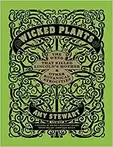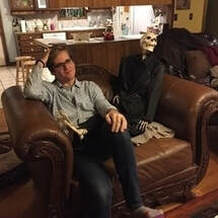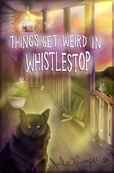Sacred Chickens
Menu
SACRED CHICKENS
Review: Wicked Plants: The Weed That Killed Lincoln's Mother And Other Botanical Atrocities5/29/2020  Wicked Plants Author Amy Stewart By Jarad Johnson Nature is something that the gardener must revere. In many ways, it is our greatest teacher. Nature can be beautiful, wondrous, fascinating and otherworldly. It can also be violent, dangerous, and mischievous. All of that encompasses the general term of nature, and it’s much more complex than many people make it out to be. When people go for a walk or a hike, they are generally seeking a peaceful retreat. Nature can be peaceful, but as Amy Stewart points out, you might not want to relax too much. On a walk through the woods (a favorite activity of mine to do) there are many mischievous plants, some that can harm you, some that can intoxicate you, and some that might even kill you given the chance. Here in the south, I see a lot of pokeweed (Phytolacca Americana), which is a poisonous perennial, whose berries can send you to the hospital. I have also encountered jimsonweed, which is mentioned in the book. As child I collected and saved the seeds in a jar. Anyone who knows the capabilities of that plant would be horrified, as only one or two seeds can be lethal. And don’t even get me started on grasses and ragweed, the banes of my existence. Constantly invading the flower beds, choking out everything they can reach, not to mention irritating my sinuses to no end. All of these plants are in the “peaceful” forest. One other plant that I have encountered is kudzu. It has invaded the United States like the alien it is, particularly the south, and seems to want to claim all the space for its own. You see it just covering trees and the ground, sapping nutrients and inhibiting growth. So, you see, though we may find tranquility and rest in nature, it is in constant conflict with itself. Think about that next time you brush your hands against an unknown plant or lean down to smell a wildflower: it might just kill you. This is fascinating little book. I’ve known about it for some time (it’s been on Julie’s shelves for years, but I bought my own copy and am glad that I did). Poisonous plants are something that I have always been interested in, as well as carnivorous plants. I guess it’s something about the more dangerous specimens and how they behave. I love how the book is set up: the aged pages, the old-fashioned script, the hand drawn illustrations- all of it gives the feel of a book that is much older, and that appeals to me. I think many people often see poisonous plants as exotic and something that you should stay far away from. This book dispels that notion, among many others. If you have houseplants, as I do, in most cases you are growing something that is toxic. Many of the beautiful flowers that gardeners love to plant are dangerous when consumed. Poison is everywhere, folks. For example, I grow Carolina Jessamine, all parts of which are toxic. Does that mean that I’m going to rip out that plant because it’s poisonous? No, of course not. But it is good to know your plants, just in case those flowers looked tempting. There are many plants in here that I was familiar with in passing, and many that I was not. I had not idea what iboga, khat, or the betel nut were, but I also didn’t know that the elderberry fruit was toxic in its raw form. Azaleas, a favorite among southerners, is also toxic to humans. I’ll think about that next time I’m admiring my grandmother’s shrubs. In short, this is a book I see myself coming back to. Not only is it informative, it’s also very funny. You learn about plants that explode, plants that bleed, and plants that overstay their welcome. This book reveals a facet of the natural world that is fascinating, and if that interests you, you wont regret picking it up. Just don’t, under any circumstances, eat the berries!  Bio: Jarad is the co-administrator and writer for Sacred Chickens, loves tea and coffee, and tries to spend every spare second reading. His most recent interest (some might say obsession) is in gardening. He graduated from MTSU with a bachelor’s degree in English and is pursuing freelance writing before he begins work on his MA. Bless his heart! Let's all light a candle for him and send him happy thoughts!
2 Comments
|

Click Photo above to buy ebook or paperback from Amazon.
Here's the link to Barnes and Noble Or order through your favorite independent bookstore! Categories
All
|
 RSS Feed
RSS Feed